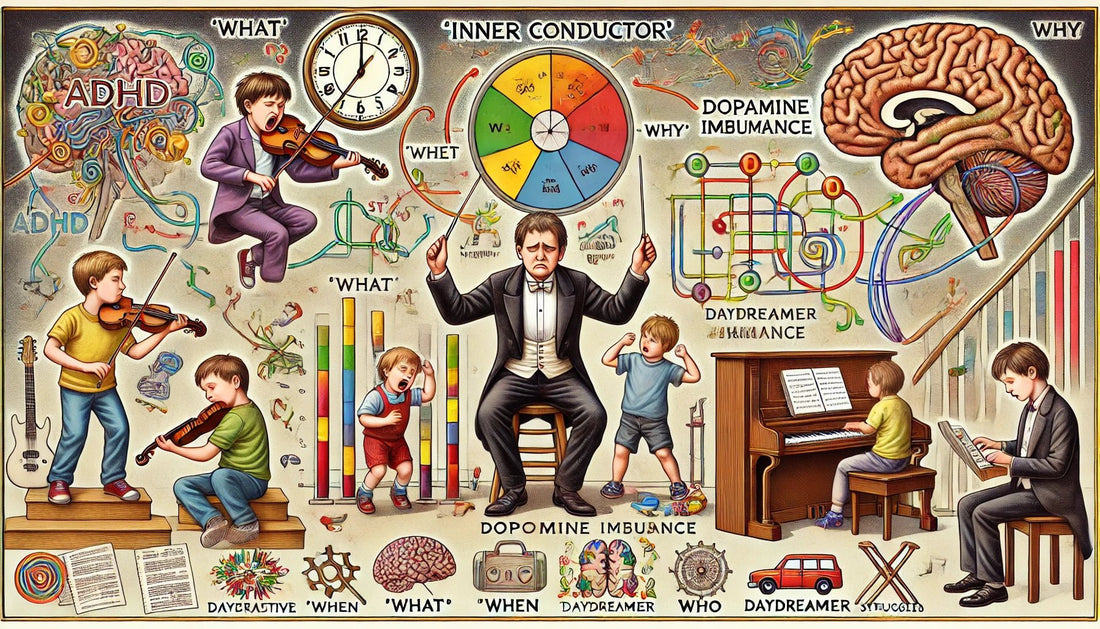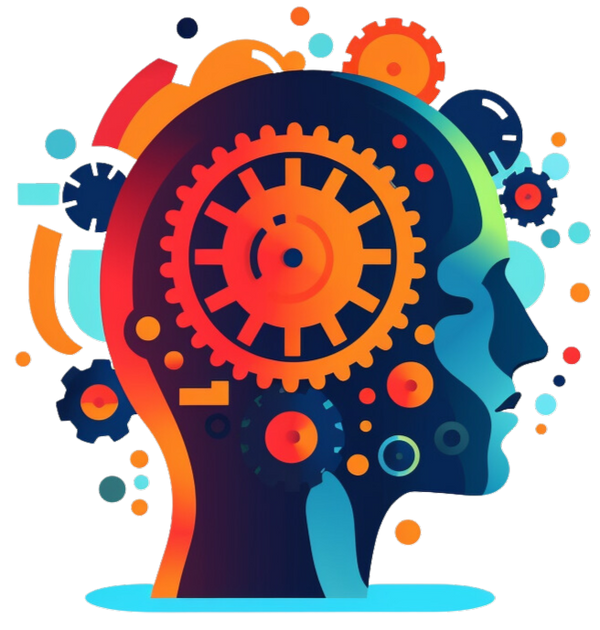
Freestyle Jazz: How the brain of people with ADHD thinks
Share
Conspicuous and loud – or clumsy and absent. This is how ADHD can manifest itself externally. But there's much more to it than that. Get to know the "erratic conductor" in the minds of those affected by ADHD.
The wild child and the jack-in-the-box: These are probably the two most familiar images when thinking of children and adults with ADHD. "ADHD-HI" is the medical term for hyperactive ADHD sufferers, "ADHD-I" for daydreamers (formerly known as "ADD"). But ADHD isn't just about hyperactivity or inattention. The syndrome is closely linked to the "executive functions" of the frontal lobe. These, taken together, are something like the "inner conductor" or "janitor" in our heads.

In the frontal lobe: four circuits that move a lot
The prefrontal cortex, or frontal brain, plays a central role in executive functions. Within this area, four primary circuits have been identified that play a crucial role in understanding ADHD:
The "What" circuit : This is all about working memory. It's like our brain's notebook.
Example : Remember a shopping list or details from a meeting without taking notes.
The "when" circuit : The brain's internal clock.
Example : Knowing when is the best time to ask your boss for a raise or finding the right moment for a difficult conversation.
The "why" circuit : It is connected to our feelings.
Example : Choosing a film to suit your mood or deciding not to discuss certain topics with a sensitive friend.
The "Who" circuit : The circle of self-awareness.
Example : Recognizing when you're stressed and taking steps to relax. Or understanding when you're the cause of a conflict—and taking responsibility.

Specific tasks of the executive functions
The following tasks are carried out every day in the frontal lobe, in a highly complex interaction of approximately 86 billion nerve cells (for comparison: our Milky Way has 100-400 billion stars).
Prioritize tasks : Decide what is urgent and what can wait.
Example : We choose to finish a work report instead of watching a TV show. Or the decision to pay bills before buying a new smartphone.
Time management : Allocating appropriate time to tasks and ensuring they get completed.
Example : Breaking a project down into smaller tasks and setting a deadline for each one. Or reserving certain times of the day for relaxation and self-care.
Making decisions : Weigh up options and then calmly choose the best course of action.
Example : Deciding whether to accept a new job offer or stay in your current position. Or choosing between two vacation destinations based on your budget and interests.

ADHD: Impairment of executive functions
ADHD is closely linked to the function of the neurotransmitter dopamine. Dopamine is a central neurotransmitter in the brain that influences a variety of processes, including mood, behavior, and cognitive functions. Dopamine also plays a role in regulating blood flow to the brain and other processes critical for the proper functioning of executive functions in the brain.
The dopamine imbalance in ADHD impairs the brain's ability to effectively control executive functions. This causes this "inner conductor" to become erratic and insecure, making planning, organizing, and completing tasks difficult. For example, things are only considered and discussed but not tackled, tasks started are abandoned halfway through, routines are forgotten, the sense of time is lost, objects are constantly misplaced or searched for – and much more.

The effects on children: A closer look
Task prioritization : A child with ADHD has difficulty deciding which homework to start with. They almost always choose the task they enjoy most over the most urgent one. For example, they might color a picture for art class before completing the math problem due the next day. The objection: "We all feel that way." A valid one, but not to that extent. "Boring" tasks are psychologically tormenting for ADHD children, if not causing physical suffering (internal heat, sweating, ever-increasing nervousness).
Time management : Children with ADHD can easily and completely lose track of time. A 10-minute break to play with toys can turn into an hour, leaving them with less time for homework or chores. For example, a mother might ask her child to get ready for bed in 10 minutes, but the child becomes engrossed in their game and forgets the request, leading to a delayed bedtime—as well as constant arguments.
Impatience : At school, children with ADHD often blurt out answers without waiting for their turn, which frustrates teachers. Or, the child has difficulty completing tasks that require patience—such as a math worksheet with 20 very similar problems.

Decision-making : Simple decisions can become overwhelming. A child might spend too much time deciding what cereal to eat in the morning or what T-shirt to wear, making the morning routine tedious and stressful. Dopamine is THE "decision molecule," which is clearly evident in people who have an excess of it in their brains (after consuming alcohol or drugs, for example. "I'll do all that tomorrow," "You're beautiful, I want to kiss you!", "I can drive home perfectly," etc.).
Emotional Regulation : Children with ADHD tend to exhibit intense emotional reactions more often than not. A minor disappointment, such as a rainy day at a game, can quickly lead to destructive emotional outbursts. Conversely, the excitement at a birthday party can be so overwhelming that it leads to overstimulation and tears. People with ADHD generally feel at an enormous depth, as they not only readily and quickly connect thoughts, but also emotions.
Self-motivation : Without immediate rewards, these children may find it difficult to complete necessary tasks like chores. For example, they need constant encouragement and small attention to complete a week-long project—while other children can complete it with discipline much more often with the prospect of a grade in the distance.
Planning and problem-solving : A child with ADHD may have difficulty with multi-step tasks. For example, if asked to clean their room, they may feel overwhelmed and unsure where to start (prioritization). This often leads these children to avoid the task altogether or to start several subtasks without completing any of them.

conclusion
Understanding the relationship between ADHD and executive functioning provides valuable insight into the challenges and difficulties faced by those with ADHD on a daily basis. For parents, this understanding is the first important step in providing the right, loving support.
When you recognize that your child isn't simply "difficult" or "lazy," but is genuinely struggling with tasks that are much easier for neurotypical children to handle, you'll have more empathy and be able to develop effective strategies to support your child in everyday life. This will pave the way for them to lead a fulfilling life as an adult—despite, with, or even because of ADHD (many strengths!).
